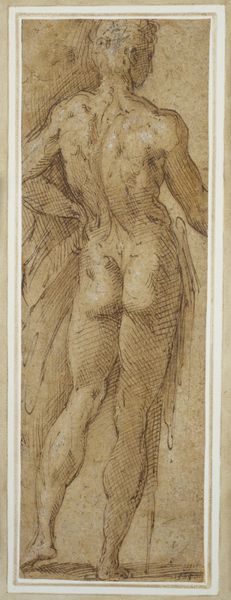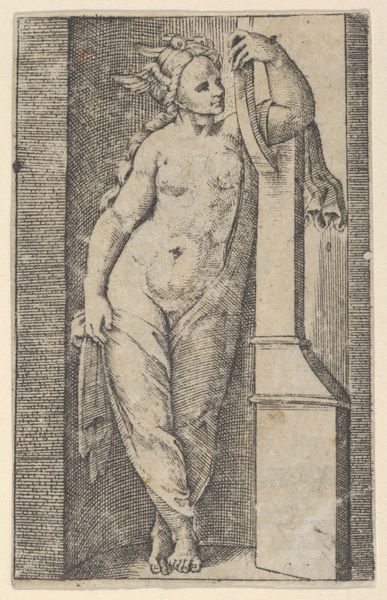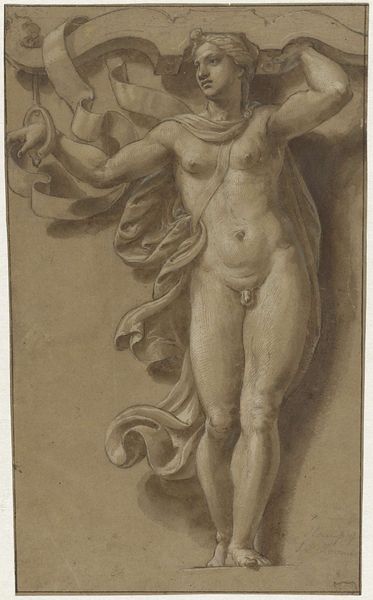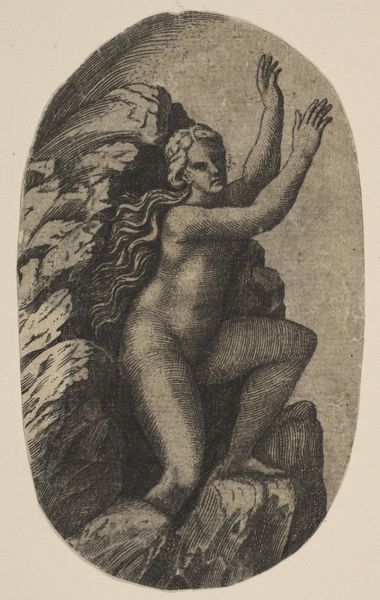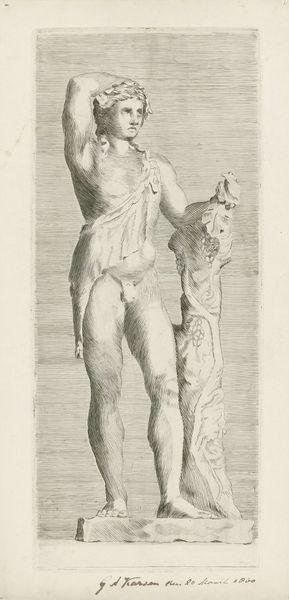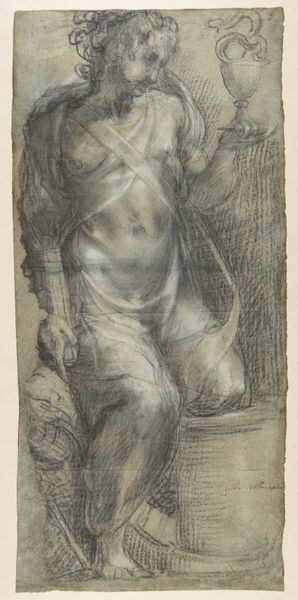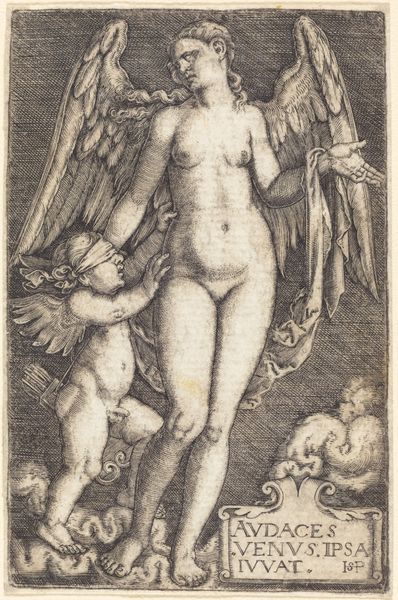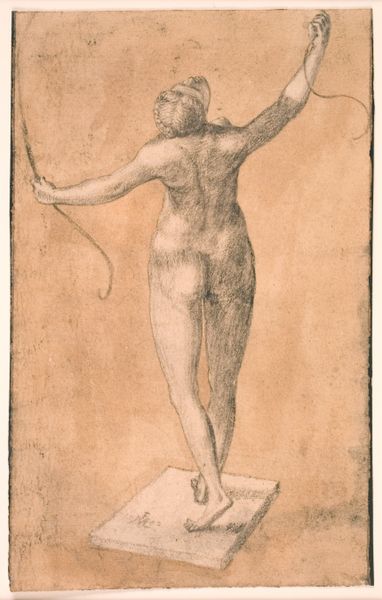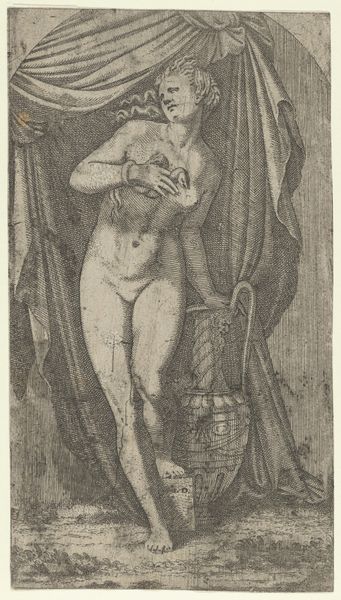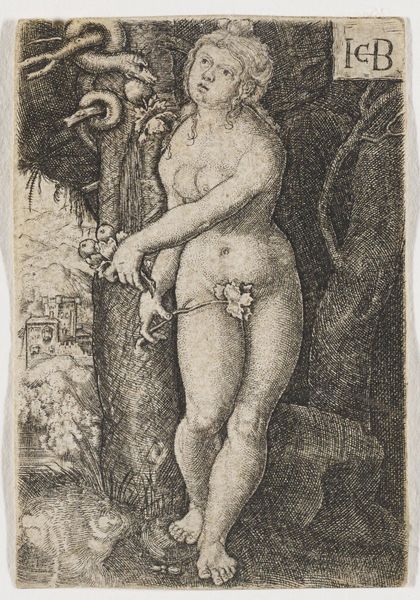
drawing, print, engraving
#
drawing
# print
#
mannerism
#
figuration
#
11_renaissance
#
history-painting
#
nude
#
engraving
Dimensions: sheet: 6 x 2 3/8 in. (15.2 x 6 cm)
Copyright: Public Domain
Curator: Here we have Giulio Bonasone's "Leda and the Swan," a Mannerist engraving created between 1526 and 1581. It's part of the collection at the Metropolitan Museum of Art. Editor: My first impression is a subdued unease; the stark contrast between light and shadow emphasizes an unnerving intimacy between Leda and the swan, the textured lines amplifying a kind of erotic tension. Curator: Indeed. Bonasone, like many Renaissance artists, was deeply influenced by classical mythology. The tale of Leda and the Swan, where Zeus, in the guise of a swan, seduces Leda, was frequently depicted. This engraving underscores how such themes were not just narratives but also vehicles for exploring ideals of beauty, power, and often, societal norms around sensuality. Editor: What strikes me are the exaggerated forms, especially the musculature. It is distinctly Mannerist and veers away from naturalism. Note how the textures interact to create form; Bonasone masterfully uses light to reveal form in Leda, and shadow to mostly conceal it in the Swan. The lines convey physical interaction between two dramatically disparate subjects. The tension is built, at a micro-level, using just ink on paper. Curator: Precisely. Bonasone, and other artists, helped disseminate classical themes via the relatively new medium of printmaking, thereby democratizing access to classical art and mythology. These images served as both art and political devices. These sorts of artistic creations impacted perceptions of sexuality and mythological beings within society. Editor: It also is evident the power dynamics presented in the composition, the swan literally enveloping Leda, a physical and metaphorical assertion of power and an interesting depiction of an unusual, uncomfortable romance. Curator: Consider as well the context of the artist. Bonasone worked during a time of great socio-religious turbulence, so the presence of nudes must also be considered in this environment of shifting cultural ideals, where patronage influenced thematic preferences. Editor: What I gather is that the piece pushes formal and emotional boundaries, it's visually and conceptually dense despite its seeming simplicity. Curator: Absolutely. This piece, viewed within its historical and stylistic context, speaks volumes about the cultural and artistic environment of the 16th century. Editor: Agreed; through considering the work's aesthetic, we’re forced to consider a variety of cultural impacts and expressions beyond simply aesthetics.
Comments
No comments
Be the first to comment and join the conversation on the ultimate creative platform.
